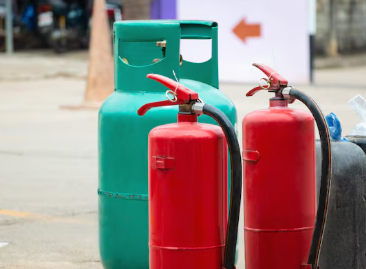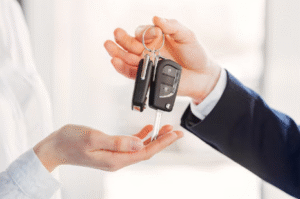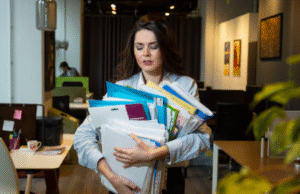How to Safely Store a Gas Cylinder at Home: Complete Safety Guide
Storing a gas cylinder at home is something most households do, but not everyone knows the proper way to handle...

Storing a gas cylinder at home is something most households do, but not everyone knows the proper way to handle and store it safely. Whether you’re using LPG (liquefied petroleum gas) for cooking, heating, or other purposes, gas cylinder safety is absolutely essential to avoid accidents, leaks, or explosions.
This complete safety guide will walk you through how to safely store a gas cylinder at home, the dos and don’ts, safety checks, and emergency tips every homeowner should know.
1. Why Gas Cylinder Safety Matters
Gas cylinders contain highly flammable gases such as propane or butane. These gases are under pressure, which means any mishandling or leakage can cause serious accidents. Even a small spark near a leaking cylinder can result in a fire or explosion.
According to safety experts, most gas-related accidents at home happen due to improper storage, poor ventilation, or faulty equipment. Learning how to store your gas cylinder correctly can prevent these risks and keep your family safe.
2. Choosing the Right Location for Gas Cylinder Storage
The first and most important step is to choose the correct location for storing your gas cylinder. The placement of the cylinder determines how safe and efficient your gas usage will be.
a. Store in a Well-Ventilated Area
Gas cylinders must always be stored in a well-ventilated area. Good ventilation ensures that if there’s a minor gas leak, it won’t accumulate and create a dangerous concentration of gas in the air.
Avoid keeping your cylinder in enclosed spaces such as cupboards, basements, or under the kitchen sink. Instead, place it in a spot where fresh air can circulate freely.
b. Keep Away from Heat and Flames
Always keep your gas cylinder away from heat sources like stoves, ovens, electric sockets, and direct sunlight. Excessive heat can increase the pressure inside the cylinder, which can be hazardous.
Ideally, keep the cylinder at least one meter away from the stove or any open flame.
c. Avoid Low-Lying Areas
LPG is heavier than air. In case of a leak, the gas tends to settle near the floor. Therefore, avoid storing the cylinder in low-lying areas, as gas accumulation can be difficult to detect and can easily ignite.
d. Keep It Upright
A gas cylinder should always be stored in an upright position. Storing it horizontally can cause liquid LPG to reach the valve, leading to leaks or regulator damage. Make sure it stands on a flat, stable surface to prevent tipping over.
3. How to Connect and Use a Gas Cylinder Safely
Once your cylinder is placed correctly, the next step is to connect and use it safely.
a. Use Approved Regulators and Hoses
Always use a certified gas regulator and LPG-compatible hose pipe. Avoid using low-quality or damaged hoses. Check the expiry date printed on the hose and replace it if it’s worn out, cracked, or loose.
b. Tighten Connections Securely
When connecting the regulator, make sure it fits tightly and securely. Use your hands — never use metal tools like wrenches, as they might damage the fittings or cause sparks.
c. Leak Test Regularly
After connecting, always perform a soap solution leak test. Mix soap with water and apply it to the cylinder valve and connection points. If bubbles appear, it means gas is leaking. Turn off the regulator immediately and get professional help.
d. Turn Off When Not in Use
Always turn off the cylinder valve and regulator knob when not in use, especially before sleeping or leaving the house. This simple habit can prevent potential leaks and accidents.
4. Safety Tips for Indoor Cylinder Use
When the gas cylinder is placed indoors (for example, in your kitchen), there are several extra precautions to take.
a. Keep the Area Clean
Make sure the area around the cylinder is clean and dry. Avoid keeping flammable materials like cloth, paper, or oil near the cylinder.
b. Don’t Store Spare Cylinders Indoors
If you have a spare gas cylinder, do not store it inside the house. Extra cylinders should be kept outside in a sheltered, ventilated area.
c. Avoid Covering the Cylinder
Do not cover your gas cylinder with a cloth, plastic, or decorative cover. Covering prevents air circulation and traps heat, which increases the risk of overheating.
d. Ensure Easy Accessibility
The cylinder valve and regulator should be easily accessible in case of emergency. Avoid placing it in tight corners or behind heavy objects.
5. Outdoor Gas Cylinder Storage
If you store your gas cylinder outdoors, you still need to follow safety rules to protect it from heat, moisture, and tampering.
a. Shelter from Weather
Keep the cylinder in a shaded and covered area to protect it from rain and direct sunlight. However, make sure the area remains open and well-ventilated.
b. Secure the Cylinder
If your home is in a windy area, use a chain or strap to secure the cylinder to a wall or post to prevent it from falling.
c. Avoid Ground Contact
Place the cylinder on a raised platform or concrete slab to keep it off the ground. This prevents rusting from moisture or water accumulation.
d. Keep Away from Electrical Devices
Do not store the cylinder near electrical panels, generators, or appliances that can produce sparks.
6. How to Detect a Gas Leak
Detecting a gas leak early can save lives. Here’s how you can recognize the signs:
a. Smell
LPG is naturally odorless, but a strong odorant (similar to rotten eggs) is added so leaks can be detected quickly. If you notice this smell, it’s a warning sign.
b. Hissing Sound
If you hear a hissing or whistling sound near the valve or pipe, turn off the regulator immediately and check for leaks.
c. Sudden Fire Flickering
If the stove’s flame becomes unusually high or low or flickers irregularly, it could indicate uneven gas flow or a small leak.
7. What to Do in Case of a Gas Leak
Knowing how to react quickly can prevent disasters. Follow these steps immediately if you suspect a leak:
- Turn off the regulator and main valve of the cylinder.
- Do not light matches, candles, or lighters.
- Do not turn on or off any electrical appliances — even a light switch can cause a spark.
- Open all windows and doors to let the gas escape.
- Move the cylinder outdoors if possible and safe to do so.
- Call your gas supplier or emergency services from outside the house.
Never use a fan or attempt to blow the gas out manually. Natural ventilation is the safest option.
8. Maintenance and Inspection
Routine maintenance is crucial for gas cylinder safety. Regular checks can help you spot issues before they become dangerous.
a. Check for Rust or Damage
Inspect your cylinder regularly for dents, corrosion, or rust. A damaged cylinder should not be used — contact your gas provider for replacement.
b. Verify the Expiry Date
Each gas cylinder has a manufacturing and expiry date marked on the neck. The format usually looks like “A 25,” where “A” represents the quarter and “25” means the year 2025. Replace the cylinder if it’s past expiry.
c. Replace Old Hoses
Gas hoses should be replaced every 2–3 years or sooner if they show signs of wear or cracking.
d. Use Certified Suppliers
Always buy or refill your cylinder from authorized suppliers only. Unauthorized refilling stations may not follow safety standards.
9. Safety Around Children and Pets
Children and pets are naturally curious and might unknowingly tamper with the gas cylinder.
- Keep the cylinder area out of reach of children.
- Teach kids never to play near the stove or gas cylinder.
- Ensure pets can’t knock over the cylinder or chew on the hose.
A simple barrier or safety gate can help protect both children and animals from potential harm.
10. Seasonal Gas Cylinder Safety Tips
Different seasons affect gas cylinders differently, so it’s wise to adjust your safety measures accordingly.
During Summer
- Keep the cylinder away from direct sunlight.
- Ensure proper ventilation to prevent overheating.
During Winter
- Avoid placing the cylinder near heaters or fireplaces.
- Ensure the valve doesn’t freeze; if it does, warm it gently using a cloth dipped in warm water (never with fire).
During Rainy Season
- Prevent water accumulation around outdoor cylinders.
- Check for rust or moisture regularly.
11. Common Mistakes to Avoid
Many accidents happen due to avoidable mistakes. Here are a few don’ts you should always remember:
- Don’t store the cylinder lying down.
- Don’t use makeshift or non-approved regulators.
- Don’t keep the cylinder near electrical boards or sockets.
- Don’t ignore the smell of gas — even if it seems faint.
- Don’t store more than one filled cylinder indoors.
12. Benefits of Proper Gas Cylinder Storage
When you store and handle gas cylinders safely, you enjoy several benefits:
- Reduced risk of accidents or fire.
- Longer cylinder life due to proper handling.
- Efficient gas usage and consistent pressure.
- Peace of mind knowing your home and loved ones are safe.
Conclusion
Gas cylinders are a vital part of everyday life, especially in homes that rely on LPG for cooking or heating. However, with convenience comes responsibility. Proper gas cylinder storage isn’t just a safety requirement — it’s a life-saving habit.
Always remember the key points:
- Store your cylinder in a well-ventilated, shaded, and upright position.
- Keep it away from flames, electrical appliances, and children.
- Check regularly for leaks, damage, or expired equipment.
By following these gas cylinder safety tips, you can ensure that your home remains safe, your gas usage remains efficient, and your family stays protected from avoidable hazards. Safe storage today means peace of mind tomorrow.




